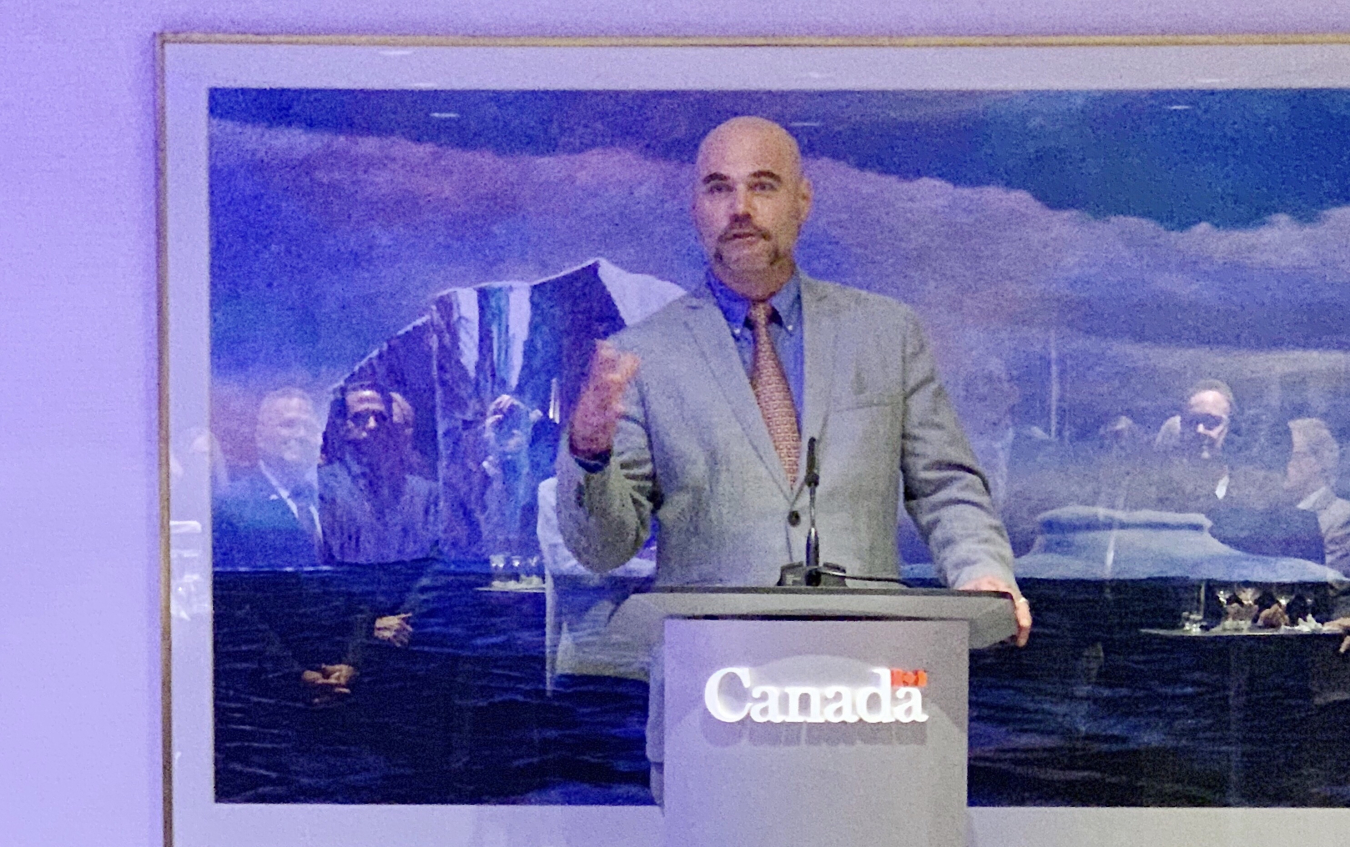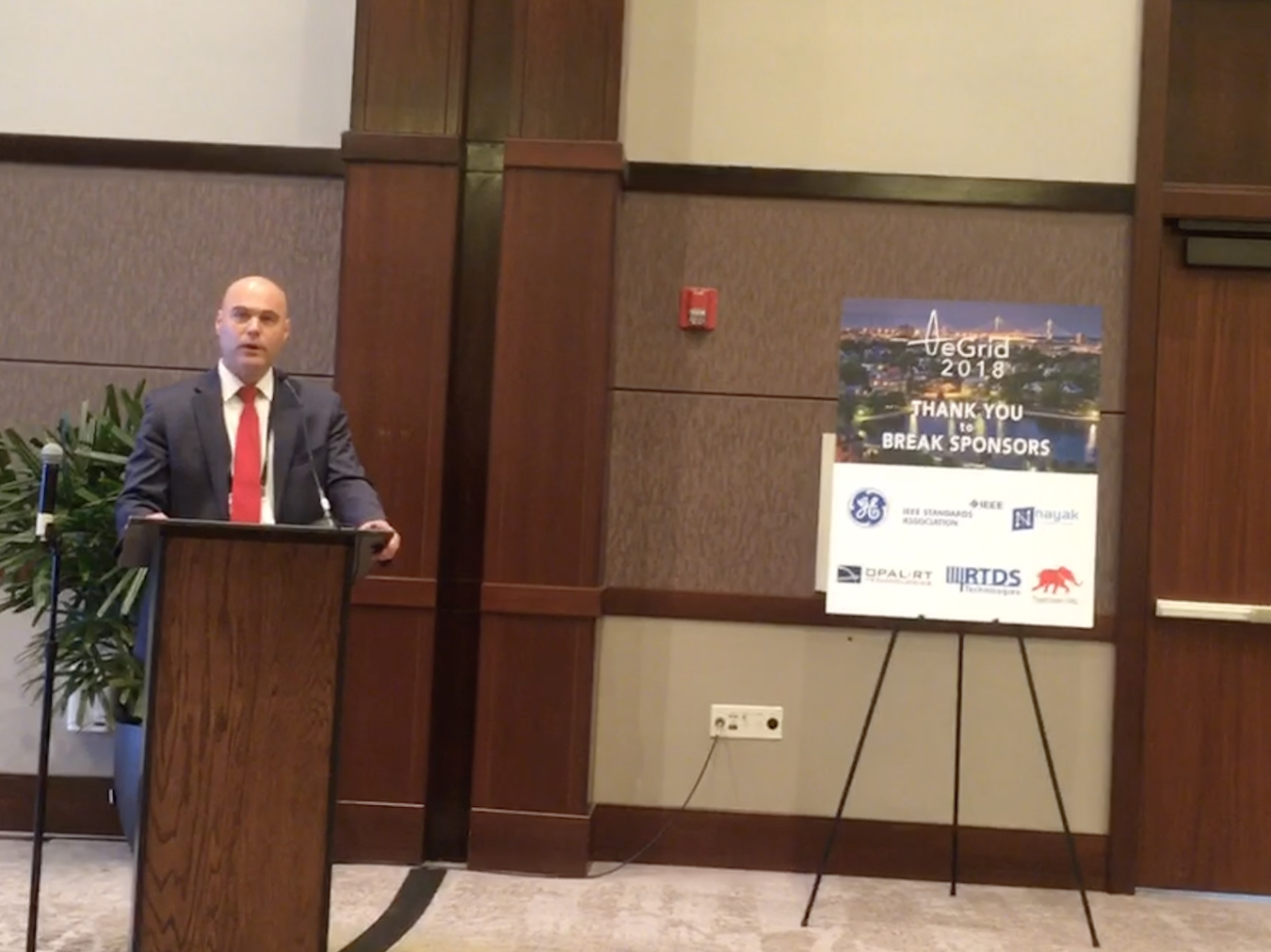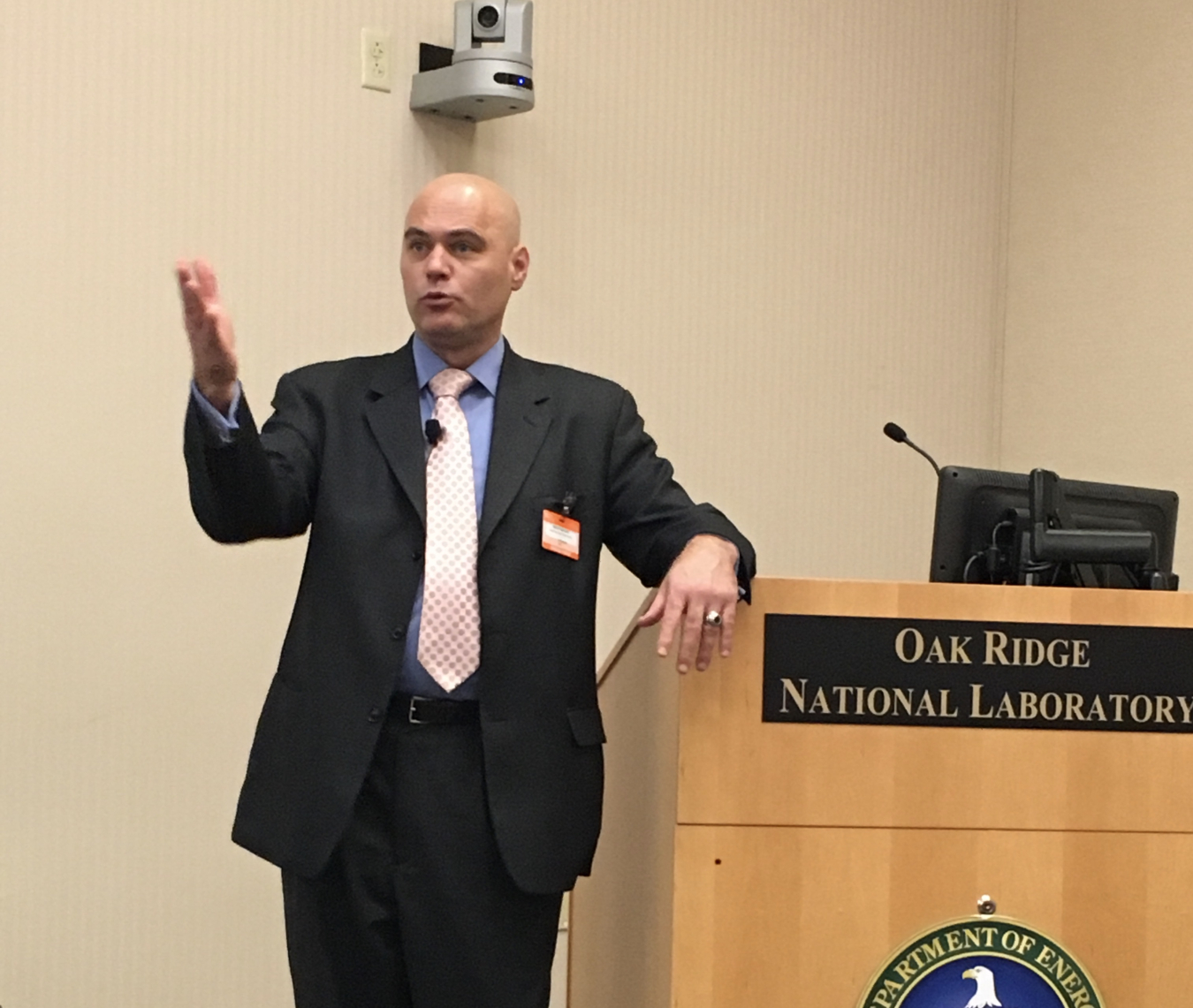As Critical Infrastructure Security and Resilience Month wraps up, a snapshot of OE's work to keep U.S. critical infrastructure secure and resilient.
November 30, 2018Every year, Critical Infrastructure Security and Resilience Month is a time when Americans are encouraged to focus on the vital importance of keeping the nation’s critical infrastructure secure and resilient. As November draws to a close, I would like to share a few updates from this month to provide a snapshot of the kinds of activities that the Office of Electricity (OE) is pursuing every day to ensure the nation’s critical energy infrastructure, including the electricity grid, is secure and able to recover rapidly from disruptions.
Our partnerships with the energy industry and the public sector are at the heart of everything that we do. We have a long and successful history of collaborating with our partners in working towards our common mission of harnessing innovation for a stronger, more reliable North American energy system and a path forward to energy independence. Throughout November, I met with numerous organizations committed to a strong and secure national critical energy infrastructure. I had the honor of speaking at the Legislative Energy Horizon Institute’s energy policy program graduation for 37 U.S. and Canadian legislators. We are proud to support this thriving partnership where citizen policymakers learn about the intersection of energy infrastructure and public policy. In Charleston, South Carolina, I discussed the Department of Energy’s efforts to advance America’s electric grid at the IEEE e-Grid Conference, an international workshop organized in cooperation between Duke Energy and Clemson University.


The Department’s National Laboratories are vital partners in our ongoing efforts, conducting innovative research and development (R&D) to move the nation closer to a stronger, more reliable North American energy system. At Oak Ridge National Laboratory (ORNL), I met with researchers involved in a range of innovative projects, including a 3D printer that is capable of producing power line poles, providing another method to improve energy infrastructure across the United States. While at ORNL, I also spoke at the Maritime Risk Symposium. From increasing the use of liquid natural gas to offshore/nearshore power generation to hybrid-electric propulsion systems, the marine industry is a critical partner in our efforts to ensure the resiliency and reliability of the electric grid. I am proud to note that two projects at ORNL and Pacific Northwest National Laboratory recently received prestigious R&D 100 awards for their work to advance grid resilience and reliability.


As part of our ongoing commitment to continue advancing critical technologies and tools, the Department announced the investment of up to $7.5 million to support the next generation of transformers that can be shared and replaced more easily in the event of a failure, are smarter with embedded sensors and analytics, and are more secure to cyber-physical threats. Transformers are fundamental to the grid, with essentially all electricity generated and delivered through these devices.
Spurring transmission development is also vital to ensuring the reliable, resilient, and secure delivery of electricity to America’s communities and businesses. On November 15, OE hosted a public workshop on electric transmission development and siting issues to solicit input regarding the Department’s 2019 electric transmission congestion study and to foster dialogue on key issues affecting today’s electric transmission systems. I would like to thank everyone who participated in this very informative and frank exchange of ideas and the National Rural Electric Cooperative Association for hosting the event at their conference facility. And to everyone I met with this month, thank you for extremely productive meetings and discussions.
As we wrap up this year’s Critical Infrastructure Security and Resilience Month, it is important to note two other efforts related to keeping the nation’s critical infrastructure secure and resilient. The deadline for submitting applications to the $5.8 million funding opportunity released in September is Monday, December 3. That investment will support R&D of the use of big data, artificial intelligence (AI), and machine learning technology and tools to derive more value from the vast amounts of sensor data already being gathered and used to monitor the health of the grid and support system operations.
Later next month, the public comment period for the Proposed Critical Electric Infrastructure Information (CEII) Rulemaking will close on December 28. As Secretary of Energy Rick Perry said, “the proposed CEII rule is a vital step forward in protecting the nation’s energy critical infrastructure and ensuring a reliable and resilient flow of energy to America’s communities and businesses.” More information is available in the Federal Register Notice.
Here at the Department of Energy, throughout the year, we are committed to keeping the nation’s critical energy infrastructure secure and resilient. I look forward to continuing to work closely with our industry and public partners to ensure the nation’s critical energy infrastructure is secure and able to recover rapidly from disruptions.

